| No. | Portrait | Name
(Birth–Death) | Term of office | Party |
|---|
| Took office | Left office |
|---|
| 1 |  | Pehr Evind Svinhufvud
(1861–1944) | 23 May
1907 | 31 January
1913 | | Young Finnish |
| 2 |  | Oskari Tokoi
(1873–1963) | 3 February
1913 | 1 February
1914 | | Social Democratic |
| 3 |  | Kaarlo Juho Ståhlberg
(1865–1952) | 3 February
1914 | 3 April
1917 | | Young Finnish |
| 4 | 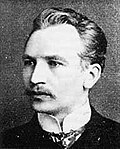 | Kullervo Manner
(1880–1939) | 4 April
1917 | 30 October
1917 | | Social Democratic |
| 5 |  | Johannes Lundson
(1867–1939) | 2 November
1917 | 25 September
1918 | | Young Finnish |
| 6 | 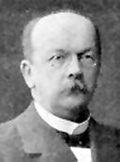 | Lauri Ingman
(1868–1934) | 27 September
1918 | 4 November
1918 | | Finnish |
| 7 |  | Ernst Nevanlinna
(1873–1932) | 6 November
1918 | 11 November
1918 | | Finnish |
| (6) |  | Lauri Ingman
(1868–1934) | 13 November
1918 | 28 November
1918 | | Finnish |
| 8 |  | Paavo Virkkunen
(1874–1959) | 29 November
1918 | 31 March
1919 | | Finnish |
| 9 |  | Lauri Kristian Relander
(1883–1942) | 2 April
1919 | 8 May
1920 | | Agrarian |
| 10 |  | Kyösti Kallio
(1873–1940) | 8 May
1920 | 29 March
1921 | | Agrarian |
| 11 |  | Wäinö Wuolijoki
(1872–1947) | 31 March
1921 | 4 September
1922 | | Social Democratic |
| (10) |  | Kyösti Kallio
(1873–1940) | 6 September
1922 | 14 November
1922 | | Agrarian |
| (11) |  | Wäinö Wuolijoki
(1872–1947) | 15 November
1922 | 31 January
1923 | | Social Democratic |
| (8) |  | Paavo Virkkunen
(1874–1959) | 2 February
1923 | 30 April
1924 | | National Coalition |
| (10) |  | Kyösti Kallio
(1873–1940) | 2 May
1924 | 31 March
1925 | | Agrarian |
| (11) |  | Wäinö Wuolijoki
(1872–1947) | 1 April
1925 | 31 January
1926 | | Social Democratic |
| (8) |  | Paavo Virkkunen
(1874–1959) | 2 February
1926 | 1 September
1927 | | National Coalition |
| (10) |  | Kyösti Kallio
(1873–1940) | 3 September
1927 | 31 January
1928 | | Agrarian |
| (8) |  | Paavo Virkkunen
(1874–1959) | 1 February
1928 | 31 January
1929 | | National Coalition |
| (10) |  | Kyösti Kallio
(1873–1940) | 1 February
1929 | 16 August
1929 | | Agrarian |
| (8) |  | Paavo Virkkunen
(1874–1959) | 17 August
1929 | 7 July
1930 | | National Coalition |
| 12 |  | Juho Sunila
(1875–1936) | 8 July
1930 | 20 October
1930 | | Agrarian |
| (10) |  | Kyösti Kallio
(1873–1940) | 21 October
1930 | 8 October
1936 | | Agrarian |
| 13 |  | Väinö Hakkila
(1882–1958) | 9 October
1936 | 4 April
1945 | | Social Democratic |
| 14 |  | Karl-August Fagerholm
(1901–1984) | 6 April
1945 | 14 July
1948 | | Social Democratic |
| 15 | 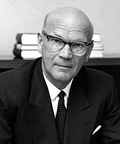 | Urho Kekkonen
(1900–1986) | 22 July
1948 | 21 March
1950 | | Agrarian |
| (14) |  | Karl-August Fagerholm
(1901–1984) | 23 March
1950 | 6 March
1956 | | Social Democratic |
| 16 | 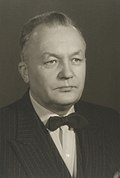 | V. J. Sukselainen
(1906–1995) | 9 March
1956 | 28 May
1957 | | Agrarian |
| (14) |  | Karl-August Fagerholm
(1901–1984) | 31 May
1957 | 6 June
1958 | | Social Democratic |
| (16) |  | V. J. Sukselainen
(1906–1995) | 29 July
1958 | 14 January
1959 | | Agrarian |
| (14) |  | Karl-August Fagerholm
(1901–1984) | 14 January
1959 | 16 February
1962 | | Social Democratic |
| 17 | 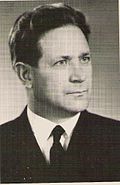 | Kauno Kleemola
(1906–1965) | 24 February
1962 | 12 March
1965 | | Agrarian
(until 1965) |
| Centre
(from 1965) |
| (14) |  | Karl-August Fagerholm
(1901–1984) | 23 March
1965 | 4 April
1966 | | Social Democratic |
| 18 |  | Rafael Paasio
(1903–1980) | 14 April
1966 | 1 June
1966 | | Social Democratic |
| 19 | 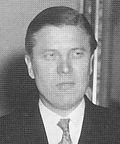 | Johannes Virolainen
(1914–2000) | 3 June
1966 | 26 March
1968 | | Centre |
| (16) |  | V. J. Sukselainen
(1906–1995) | 26 March
1968 | 20 March
1970 | | Centre |
| (18) |  | Rafael Paasio
(1903–1980) | 3 April
1970 | 29 February
1972 | | Social Democratic |
| (16) |  | V. J. Sukselainen
(1906–1995) | 29 February
1972 | 28 January
1976 | | Centre |
| 20 |  | Veikko Helle
(1911–2005) | 5 February
1976 | 31 January
1978 | | Social Democratic |
| 21 |  | Ahti Pekkala
(1924–2014) | 1 February
1978 | 29 May
1979 | | Centre |
| (19) |  | Johannes Virolainen
(1914–2000) | 5 June
1979 | 25 March
1983 | | Centre |
| 22 |  | Erkki Pystynen
(born 1929) | 7 April
1983 | 25 March
1987 | | National Coalition |
| 23 |  | Ilkka Suominen
(1939–2022) | 2 April
1987 | 5 May
1987 | | National Coalition |
| 24 |  | Matti Ahde
(1945–2019) | 8 May
1987 | 1 February
1989 | | Social Democratic |
| 25 |  | Kalevi Sorsa
(1930–2004) | 1 February
1989 | 21 March
1991 | | Social Democratic |
| 26 | 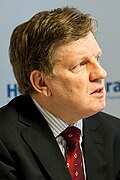 | Esko Aho
(born 1954) | 4 April
1991 | 26 April
1991 | | Centre |
| (23) |  | Ilkka Suominen
(1939–2022) | 30 April
1991 | 6 February
1994 | | National Coalition |
| 27 |  | Riitta Uosukainen
(born 1942) | 7 February
1994 | 23 March
1995 | | National Coalition |
| 28 |  | Paavo Lipponen
(born 1941) | 28 March
1995 | 19 April
1995 | | Social Democratic |
| (27) |  | Riitta Uosukainen
(born 1942) | 21 April
1995 | 23 March
1999 | | National Coalition |
| 29 |  | Jukka Mikkola
(1943–2018) | 30 March
1999 | 16 April
1999 | | Social Democratic |
| (27) |  | Riitta Uosukainen
(born 1942) | 20 April
1999 | 18 March
2003 | | National Coalition |
| 30 |  | Anneli Jäätteenmäki
(born 1955) | 25 March
2003 | 16 April
2003 | | Centre |
| (28) |  | Paavo Lipponen
(born 1941) | 22 April
2003 | 20 March
2007 | | Social Democratic |
| 31 |  | Timo Kalli
(born 1947) | 27 March
2007 | 20 April
2007 | | Centre |
| 32 |  | Sauli Niinistö
(born 1948) | 24 April
2007 | 19 April
2011 | | National Coalition |
| 33 | 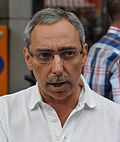 | Ben Zyskowicz
(born 1954) | 27 April
2011 | 22 June
2011 | | National Coalition |
| 34 |  | Eero Heinäluoma
(born 1955) | 23 June
2011 | 21 April
2015 | | Social Democratic |
| 35 |  | Juha Sipilä
(born 1961) | 28 April
2015 | 29 May
2015 | | Centre |
| 36 |  | Maria Lohela
(born 1978) | 29 May
2015 | 5 February
2018 | | Finns
(until 2017) |
| Blue Reform
(from 2017) |
| 37 |  | Paula Risikko
(born 1960) | 5 February
2018 | 16 April
2019 | | National Coalition |
| 38 | 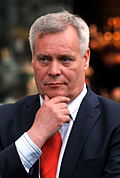 | Antti Rinne
(born 1962) | 24 April
2019 | 5 June
2019 | | Social Democratic |
| 39 |  | Matti Vanhanen
(born 1955) | 7 June
2019 | 9 June
2020 | | Centre |
| 40 |  | Anu Vehviläinen
(born 1963) | 9 June
2020 | 1 February
2022 | | Centre |
| (39) |  | Matti Vanhanen
(born 1955) | 1 February
2022 | 4 April
2023 | | Centre |
| 41 |  | Petteri Orpo
(born 1969) | 12 April
2023 | 20 June
2023 | | National Coalition |
| 42 |  | Jussi Halla-aho
(born 1971) | 21 June
2023 | Incumbent | | Finns |










































